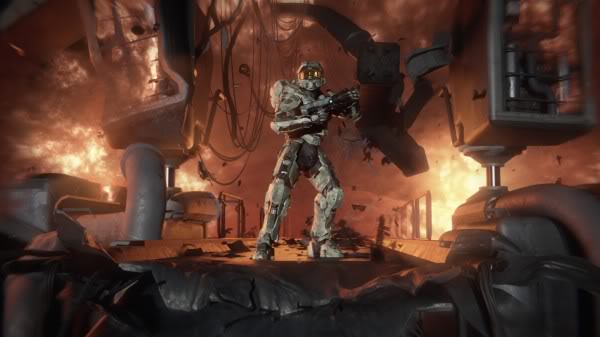An Introduction to the Elder Scrolls Online
By ctate1995 0 Comments

The Elder Scrolls Online is an upcoming MMO from Zenimax Online with one goal in mind: to bring two types of players together — the Elder Scrolls crowd, used to the great games of Skyrim, Morrowind, and Oblivion, and then there is the MMO crowd, used to all the great MMOs of the last 10 or so years such as World of Warcraft, Rift, and Guild Wars 2.
So if you fall into either of those two categories, boy does Zenimax have a cool game for you!
Everything you need to know about the The Elder Scrolls Online is right there in the name, it’s Elder Scrolls, but online. When the teams set out to make the game, all they wanted to do was make strategic, real-time combat, a lot of world immersion, and a landscape that rewarded exploration.
But in order for all that to be brought together, you need really great social systems. The Elder Scrolls Online is set about 1,000 years before Skyrim, but not only is it just a thousand years before Skyrim, but it draws on all the legends and everything that you’ve read about in the books that you find in Elder Scrolls games. So Zenimax has twenty years of lore to drop on.
Zenimax is making sure that Morrowind, Cryodill, and Skyrim feel like they do in Elder Scrolls three, four, and five. The Art styles are right in line with those titles. So now you can explore all of Tamriel! You can return to place you’ve seen before, and you can explore new places that you’ve never been.
If you’re a fan of the combat in the past Elder Scrolls games, you’ll feel right at home here. This is an MMO with an Elder Scrolls combat system. Moving your mouse will make you look around and aim your weapon, you can tap your left click to attack and hold it for more power, hold your right-click to block, and of course sprinting, crouching, and sneaking around all play a vital role in the game as well.
What sounds even more exciting is that all the characters in the game are designed so that hundreds of them can be on the screen at one time. And you’re going to have lots of customization options as well to make your character look unique. You’ll find Dwarven armors, Daedric armors, Elven armors; basically all the types of armor styles and customization options you’d come to expect from an Elder Scrolls game and Elders Scrolls lore.
Now, for any MMO player out there, you have to agree with me on the fact that by far, the worst experience of any online game is at its launch is when you’re trying to find your friends, you can’t find them, so you end up creating a character one server and then you later find out that everyone else is on another server, and then you either have to pay to move all of your characters over there, or painfully start from scratch.
That experience is not good and Zenimax has a plan to deal with that chaotic mess.
In the Elder Scrolls Online, there will be no servers or shards, or whatever they may be called. Zenimax has developed a new technology they call Mega-server where all the players are on one server so all your friends are right there, you just create a character, you click play and you go.
The game is smart about where to put you, it will put you in “game-spaces with your friends, with your guild-mates, it’s a way to be connected with everyone and the game figures out where to put you without making you do a thing. If you’ve heard of Turbine’s dynamic layering with the Lord of the Rings Online, the concept is similar here in Elder Scrolls, except here, it actually works…
With the Elder Scrolls Online, one of the big things is that you’ll be able to get together with your friends and overcome obstacles. So things like public dungeons, heroic dungeons, but most importantly, when you take part in these events with your friends, or even with just strangers, you aren’t competing for resources, you’re all working together overcome something and you get equal credit for it.
And as a player, you are able to start by picking one of nine races, you’ll be able to pick a class, but that is just a start though. From there, all the choices you make with quests, all the choices you make, from the abilities you choose, to which weapons you use, or which armor you use, really help make your character stand out in the world.
The basis for the customization in the Elder Scrolls Online is that you can use whatever weapon or armor type you actually want to use. You can play as a heavy armored character whose a tank with a bow, or you can play as a mage who uses a two-handed weapon, or you can play as a sneaky guy who runs around healing people.
But with the combination that you selected out of what armor type you used, what weapon type you used, and what class you use, is what really creates a unique character experience for you.
One of the things you are going to be able to do that is going to make you stand out is that you have perks. Perks allow you to become a werewolf, or a vampire, or maybe even have special pets. But it’s not just about that, there are other things like how you increase your stamina, how you increase your magicka, or how you increase your health, they’re really taking you from your first class choice and makes you stand out because you’re saying these are the things that are important to me, this is the way I want to play, this is the role I want to take in combat.
Questing in Elder Scrolls Online was built around a pretty simple concept and that was Zenimax wanted the player to explore. They wanted that when the player explored for them to be able to see something around the corner and say “oh, well I was on this quest, but now I see something over there that’s really interesting.”
So players have this decision point of “which thing do I do next?” And that’s really where Zenimax wants the players to go. It’s not “what do I do next,” but it’s “which one of these things do I do next?”
The way players will really find quests in the Elder Scrolls Online is through exploration. As they wander around the world, players have an on-the-screen compass that really points out that the area they’re in is an opportunity or should have some points of interest to you based on what you’ve done in the past.
When players find a point of interest in the world, that is really where all the story content is and they’re an opportunity for the player to make a change in the world. An example of that is a werewolf invasion and when the player gets there, they fend off the werewolf invasion, save the town, and every time you come back to that village afterwards, you’ll be remembered and thanked by the villagers for your heroic actions.
Once you’ve hit level 50, that is where the game really opens up. At this point you’re jumping into some PVP action, or going into a heroic raid with your guild and your friends. Or maybe you might go into an adventure zone, which is Zenimx’s way of getting players into a zone where you can play solo, you can play with a small group, or you can play with a really large group to overcome obstacles.
PVP in Elder Scrolls Online is focused around taking various structures in Cyradill from Oblivion. The space there is very large, thus creating a perfect setting for having three alliances fighting each other. During this timeline, Imperial cities are up for grabs, and there is no emperor, so players are going to be fight with trebuchets, catapults, all kinds of weaponry to take and hold keeps, structures, and resource locations around the keep to actually get the opportunity to crown one of themselves as an emperor.
It’s really important to Zenimax that PVP isn’t just a veteran-like game. They want it to be something that people can do from the beginning, because you have to be comfortable in getting into PVP. So Zenimax is making sure that everybody is on equal footing, so that even at level 10, you can go into the PVP area and really have a great experience and a good time.
Closing Comments
With a game the size of Elder Scrolls Online, it’s really hard to give one demo, one video, one presentation, to list everything about the game. So what you’ve read in this article are the basics. But I can tell you one thing for sure, all these elements mentioned are going to come together to potentially make the next great online RPG, and from what I’ve seen so far, Zenimax may not be far off.







Log in to comment